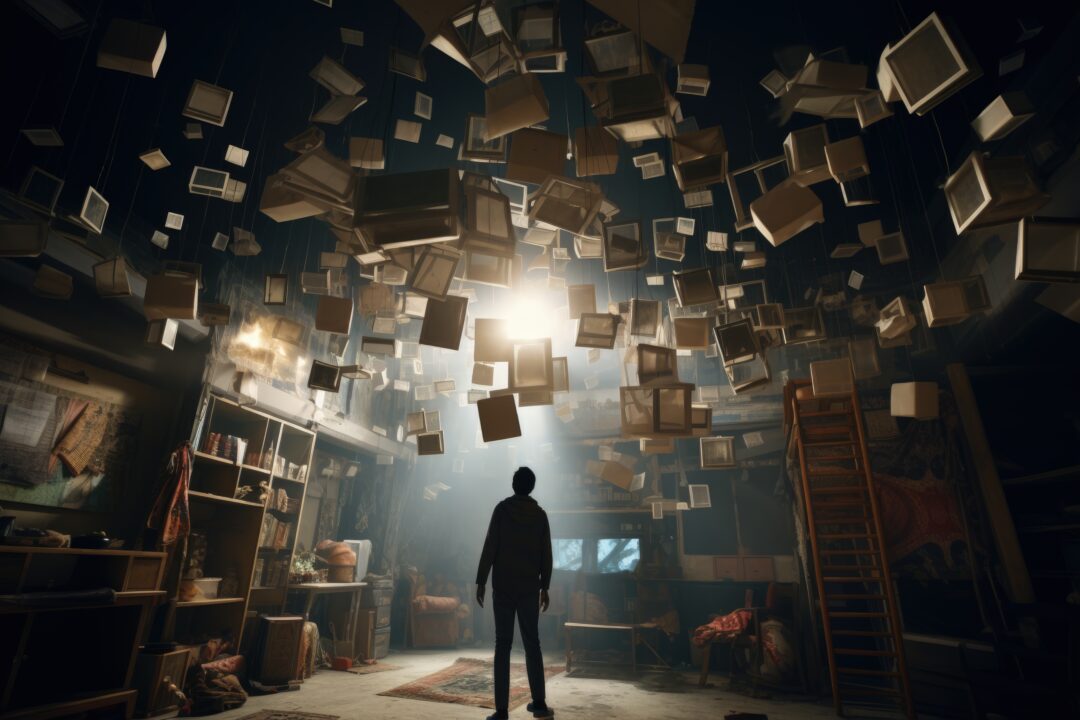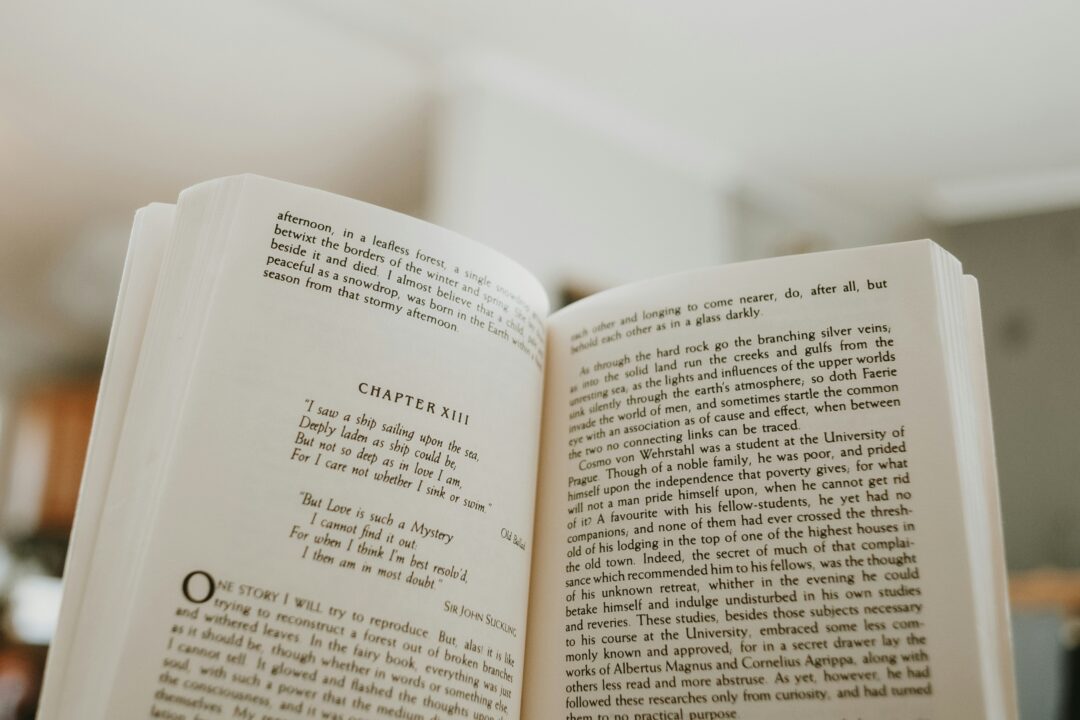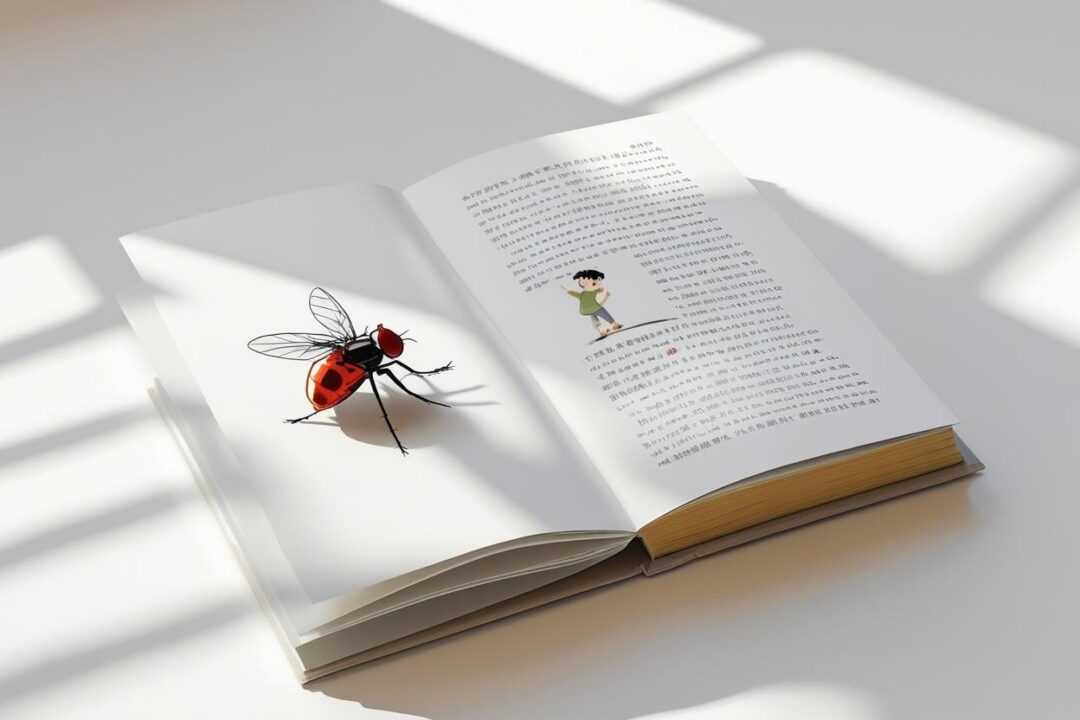Dystopian narratives plunge us into worlds where society has collapsed, exposing the fragility of civilization. From Lord of the Flies to Ender’s Game, these books explore human nature and societal breakdown, offering cautionary tales of potential futures. Dystopian fiction prompts us to reflect on our present choices and the world we create. Delve into these thought-provoking, gripping stories that not only entertain but challenge us to question the future we are shaping.
Some stories stretch across entire series, drawing us deeper into broken societies and the fight to rebuild them. Take the Silo series, with its underground silos and secrets that question who controls knowledge and power, or The 100 series, where young survivors on a ruined Earth wrestle with leadership, loyalty, and what it means to start over. Both remind us how fragile civilization is—and how resilience often comes from the most unexpected places.
Defining Dystopia: An Introduction
Dystopia — a term that conjures images of oppressive societies and desolate futures. But what exactly constitutes a dystopian narrative? From the tribal chaos in Lord of the Flies to the interstellar conflicts of a space opera, dystopian tales share a common thread: they depict worlds where the road to an ideal society has gone awry. These stories serve as cautionary tales about the 20th century’s societal and technological trajectories.
The Classics that Paved the Way for Dystopian Fiction
The pantheon of dystopian fiction is rich with classics that have shaped the genre. With seminal works such as “Fahrenheit 451,” where the blaze of book censorship burns away freedom, to Aldous Huxley’s “Brave New World,” which envisions a totalitarian regime disguised as an ideal world, these narratives have set a high bar for the dystopian books that followed.
Brave New World – Aldous Huxley
In Brave New World, Aldous Huxley crafts a society that is superficially perfect yet fundamentally flawed, providing a deeply felt exploration of human nature in a distinctly dystopian future.
A Visionary Take on a Totalitarian Future
Huxley’s vision of the future is a cautionary tale, where the pursuit of an ideal world leads to the creation of a totalitarian society. The narrative unfolds a world where individuality is sacrificed for the sake of societal stability, and the result is a dystopian future that resonates with readers decades after its publication.
Nineteen Eighty-Four – George Orwell
George Orwell’s Nineteen Eighty-Four remains one of the most influential dystopian novels, a testament to the enduring power of its themes and its harrowing vision of a society under omnipresent government surveillance.
The Quintessence of Government Surveillance and Propaganda
“Nineteen Eighty-Four” paints a bleak picture of a world where government propaganda is inescapable and surveillance penetrates every aspect of life. Orwell’s narrative is a stark warning of the dangers of unchecked power, and its impact continues to be deeply felt in a world where privacy is increasingly under threat.
Fahrenheit 451 – Ray Bradbury
In the world of Fahrenheit 451, Ray Bradbury presents a society plagued by willful ignorance, where the written word is feared and firemen ignite rather than extinguish—a powerful metaphor for censorship and the suppression of dissenting ideas.
The Frightening World of Book Censorship
“Fahrenheit 451” confronts readers with a future where books are outlawed and ‘firemen’ burn any that are found. Bradbury’s narrative serves as a stark reminder of the importance of knowledge and the dangers of censorship in a society that has lost its way.
The Time Machine – H.G. Wells
H.G. Wells’ The Time Machine stands as a pioneering work of dystopian fiction, taking readers on a journey through time to confront the potential degeneration of humanity and the stark divisions that could define our future.
A Harrowing Journey to a Dismal Future
Wells’ narrative is a seismic shift in the dystopian genre, offering a glimpse into a future where societal evolution has taken a dark turn, leaving readers to ponder the ultimate fate of human progress.
Contemporary Dystopian Worlds That Mirror Today
Contemporary dystopian novels continue to reflect our current anxieties, with authors like Margaret Atwood presenting narratives that resonate with today’s societal challenges, holding a mirror up to the issues we face and asking us to question the path we are on.
The Handmaid’s Tale – Margaret Atwood
Margaret Atwood’s The Handmaid’s Tale is a chillingly prescient addition to the dystopian canon, a narrative that envisions a future where women’s rights are drastically curtailed, and personal autonomy is a relic of the past. Atwood’s 1985 novel remains a stark warning and a call to vigilance in the face of societal regression.
A Chilling Tale of Reproductive Servitude
In “The Handmaid’s Tale,” Atwood’s 1985 addition to the dystopian canon chillingly presciently explores themes of control and reproductive servitude. In a society where fertility rates have plummeted, women are subjugated into categories, with Handmaids forced to bear children for the ruling class. It’s a disturbing vision of theocratic tyranny and the reduction of women to their biological functions that still resonates with readers today.
Station Eleven – Emily St John Mandel
Among dystopian fiction books, Station Eleven stands out for its haunting yet beautiful exploration of a world ravaged by a pandemic. Mandel weaves together the lives of a troupe of traveling actors, preserving art and humanity amidst the collapse of civilization. It’s a reminder of the fragility of our world and the power of connectivity.
Survival and Art in a Post-Pandemic Society
“Station Eleven” delves into the intersection of survival and art, imagining a post-pandemic society where a traveling symphony performs Shakespeare to scattered remnants of humanity. In this new world, characters cling to the remnants of the past while forging new connections and communities amidst the vast emptiness. The novel portrays the resilience of the human spirit and the enduring role of art, even as the world we know crumbles away.
The Road – Cormac McCarthy
Cormac McCarthy’s The Road is a Pulitzer Prize-winning work of literary fiction that masterfully depicts a father and son’s perilous journey through a scorched and desolate landscape. It’s a stark, powerful examination of survival and the bond between parent and child in a world stripped of its humanity and hope.
The Bleakness of Post-Apocalyptic Existence
“The Road” paints a vivid picture of the bleakness of post-apocalyptic existence. With ash falling from the sky and all life seemingly extinguished, the protagonists push a shopping cart through a barren land, struggling to maintain their moral compass. McCarthy’s sparse prose mirrors the spareness of the landscape, creating a haunting atmosphere that stays with readers long after the last page is turned.
Oryx and Crake – Margaret Atwood
Returning to the themes of authoritarianism and ethics, Oryx and Crake, another work by the author of “The Handmaid’s Tale,” delves into the dangers of unchecked genetic engineering. Atwood crafts a world where bioengineered species roam and human society has been irrevocably altered, raising profound questions about the manipulation of life.
Bioengineering and Corporate Tyranny
In “Oryx and Crake,” Atwood examines a future where bioengineering and corporate tyranny have converged to create a dystopian nightmare. The story follows Snowman, formerly known as Jimmy, who may be the last human alive in a world dominated by genetically modified beings. Through flashbacks, we see a society obsessed with perfection and immortality, a theme that challenges readers to contemplate the ethical implications of scientific advancement.
Young Adult Dystopias That Captivate All Ages
Young adult dystopias have gripped readers of all ages with their thrilling narratives and relatable characters. These books often center around young protagonists facing extraordinary challenges and moral dilemmas, offering a combination of adventure and coming-of-age stories that resonate with a wide audience.
The Hunger Games Trilogy – Suzanne Collins
The Hunger Games trilogy by Suzanne Collins is a defining series in young adult literature, where a dystopian society forces children into gladiatorial combat. It’s a gripping tale of survival, rebellion, and the human spirit under the most oppressive of regimes.
The Perils of Power and Reality TV
The Hunger Games trilogy examines the perils of power and the spectacle of reality TV taken to a horrifying extreme. In Panem, a totalitarian government entertains the masses and maintains control through the annual Hunger Games, where teens fight to the death. The protagonist, Katniss Everdeen, becomes a symbol of resistance, challenging the status quo and sparking a revolution. The series is a poignant commentary on society’s obsession with media and the consequences of desensitization to violence.
Divergent Series – Veronica Roth
The Divergent series by Veronica Roth presents a society divided into factions based on human virtues. It’s a tale that captures the essence of identity and the struggle of finding one’s place in a world that demands conformity.
Identity and Choice Amidst Societal Segregation
In Roth’s “Divergent,” individual identity and choice clash with a society segregated by innate traits. The protagonist, Tris, must navigate a world where fitting into a predetermined category is a matter of survival. As she uncovers the truth about her society, she challenges the strictures of factionalism and fights for freedom. The series explores the significance of personal agency and the courage to defy societal expectations.
The Maze Runner – James Dashner
The Maze Runner by James Dashner throws readers into the midst of a mysterious and deadly maze, with no memory of the outside world. It’s a fast-paced story of camaraderie, survival, and the quest for truth.
Mystery and Survival in a Controlled Environment
In The Maze Runner series, Dashner creates an intense and controlled environment where a group of teens must unravel the mystery of their existence. With each day bringing new dangers, the Gladers must work together to escape the maze’s shifting pathways. The series is a riveting blend of suspense, science fiction, and the innate human drive to overcome obstacles and seek freedom.
Unsettling Visions of the Future That Feel Too Real
Recent dystopian narratives offer unsettling visions of the future that often feel too real. These stories reflect contemporary anxieties and serve as cautionary tales about the trajectory of our society, making readers question the path we’re on and the possible futures we could face.
The Power – Naomi Alderman
Imagine a world where the gender power dynamics are flipped; Naomi Alderman’s The Power transports you into a reality where women develop the ability to produce electrical shocks, reshaping society. This book invites you to explore the nuances of power, gender, and the human experience, challenging your perceptions of societal norms.
The Dynamics of a World Ruled by Female Power
“The Power” is a provocative dive into a world where women are the dominant force, redefining global hierarchies. As the newfound ability spreads, the novel examines the shifting dynamics in personal relationships, politics, and social structures. Alderman’s narrative raises compelling questions about the nature of power, whether it corrupts equally regardless of gender, and how the world might change if the balance were to tip.
Never Let Me Go – Kazuo Ishiguro
Kazuo Ishiguro, a Nobel laureate, pens a haunting narrative in Never Let Me Go, set against the backdrop of a picturesque boarding school. The story gradually unveils the unsettling truth about the lives of its students, prompting a profound reflection on the essence of human dignity and the boundaries of science.
The Heartbreaking Reality of Life as a Clone
In “Never Let Me Go,” Ishiguro crafts a poignant tale that reveals the lives of clones bred for organ donation. The narrative, ripe with emotional depth, confronts the reader with the moral complexities of cloning and the painful struggles of characters grappling with their predetermined fates. Ishiguro’s exploration of what it means to be truly human resonates long after the final page is turned.
American War – Omar El Akkad
American War by Omar El Akkad is a gripping foray into a future ravaged by climate change and political turmoil. The novel envisions a divided United States in the late 21st century, embroiled in a second civil war, with a narrative that hits close to home, considering the current global environmental and political challenges.
A Second Civil War Torn by Climate Change and Politics
Omar El Akkad’s “American War” paints a harrowing picture of a nation split by ideological differences, exacerbated by the dire consequences of climate change. As sea levels rise and resources dwindle, the story follows characters navigating the treacherous landscape of a society fragmented by conflict, reflecting the resilient human spirit in the face of adversity.
Blindness – José Saramago
In Blindness, José Saramago confronts readers with a catastrophic scenario: a sudden epidemic of blindness sweeping through an unnamed city. This allegorical novel challenges you to consider the fragility of civilization and the core of human nature when societal structures collapse.
Society’s Descent into Chaos with the Loss of Sight
As the white blindness epidemic unfolds, Saramago’s characters are plunged into darkness, both literal and metaphorical. The breakdown of order and the ensuing chaos force a group of survivors to confront the extremes of human behavior. “Blindness” is a stark examination of dependency, community, and the will to survive when the very fabric of society unravels.
Books That Explore the Aftermath of Disasters
In the wake of catastrophe, literature often turns to the resilience of the human spirit. These books delve into the aftermath of disasters, chronicling the struggles and triumphs of those who endure and rebuild amidst the ruins of their former lives.
The Parable of the Sower – Octavia E Butler
Octavia E Butler’s The Parable of the Sower is set in a dystopian future where society has crumbled under the weight of environmental devastation and economic collapse. Through the eyes of a young protagonist, Butler explores themes of survival, community, and the human capacity for hope.
The Fight for Hope and Humanity in a Collapsed World
In a world ravaged by chaos, “The Parable of the Sower” follows Lauren Olamina as she embarks on a perilous journey through a decimated America. Butler weaves a narrative that examines the survival instincts of her characters and their pursuit of a better future through the establishment of a new belief system, Earthseed, amidst the ashes of the old world.
Zone One – Colson Whitehead
Colson Whitehead’s Zone One offers a literary twist on the post-apocalyptic genre. In the desolate landscape of a world overrun by zombies, the novel focuses on the efforts to reclaim Manhattan, now known as Zone One, and the psychological impact on the survivors.
A Literary Take on the Post-Zombie Apocalypse
As survivors in “Zone One” clear the remnants of the infected, Whitehead delves into the minds of his characters, unearthing the memories of the world they’ve lost and the haunting reality of their present. Through elegant prose, the novel examines the complexities of rebuilding civilization and the enduring human struggle for connection and meaning amidst desolation.
The Dog Stars – Peter Heller
Peter Heller’s The Dog Stars recounts the journey of a man and his dog as they navigate the challenges of a world left in tatters after a flu pandemic. Through their eyes, readers experience the stark beauty and the silent grief of a planet dramatically altered by disease.
Finding Solace in Solitude After a Flu Pandemic
In the quiet after the collapse, “The Dog Stars” protagonist finds solace in the bond with his loyal canine and the routines that give structure to his days. Heller’s evocative storytelling captures the poignancy of isolation and the drive to find meaning and companionship in the most desolate of circumstances, offering a glimpse of hope in the enduring human spirit.
The Water Cure – Sophie Mackintosh
In The Water Cure, Sophie Mackintosh spins a haunting tale of survival, weaving the narrative of a family sequestered on an island. This gripping novel explores the dynamics of love, fear, and the rituals that arise out of desperation. The isolation of the family serves as a microcosm for a dystopian society, examining the lengths to which people will go to maintain a sense of control in a world teetering on the brink of collapse.
A Family’s Survival on an Isolated Island
Imagine an existence confined to an island, where the world beyond is just a distant, toxic memory. In “The Water Cure,” Mackintosh masterfully portrays a family clinging to the vestiges of civilization through strict, often bizarre purity rituals. Their survival is a day-to-day confrontation with the elements and their psychological boundaries, culminating in a story that’s as much about emotional endurance as it is about physical survival in an unforgiving dystopian reality.
Dystopian Books That Challenge the Status Quo
Dystopian books often serve as a mirror, reflecting the anxieties and potential downfalls of contemporary society. They challenge readers to question the status quo by presenting a reality where things have gone drastically awry. Through their chilling narratives, these books warn of the consequences of unchecked power, societal complacency, and the erosion of individual freedoms.
Vox – Christina Dalcher
In Vox, Christina Dalcher delivers a powerful blow against complacency by presenting a near-future America where women are limited to speaking a mere 100 words per day. This novel is a stark reminder of the fragility of rights and the ease with which society can slip into totalitarian control. Dalcher’s narrative is a call to action, urging the protection of freedoms that, once lost, may be impossible to regain.
Silence and Subjugation of Women in a Modern World
“Vox” is a cautionary tale that echoes with the chilling plausibility of a future that could very well be ours. In Dalcher’s world, women’s voices are systematically stifled, reducing them to mere shadows of their former selves. The protagonist’s fight against this silence and subjugation is a poignant exploration of resistance and the reclaiming of one’s voice, making “Vox” a resonant and urgent read in today’s society.
The Unit – Ninni Holmqvist
The Unit by Ninni Holmqvist is a thought-provoking dive into a society that measures individuals by their utility. In this world, those deemed “dispensable” are forced into a facility where their lives are reduced to the sum of their biological contributions. Holmqvist’s work is a compelling examination of human worth and the ethical quandaries that arise when society prioritizes the collective good over individual rights.
The Value of the Individual in a Utilitarian Society
Imagine a society where your value is determined solely by your utility to others. In “The Unit,” individuals are stripped of their agency and subjected to a life of servitude under a utilitarian regime. Through her protagonist’s experiences, Holmqvist questions the morality of a society that commodifies its citizens, posing a poignant critique on the ethics of such a system and the inherent worth of each person.
Battle Royale – Koushun Takami
Battle Royale by Koushun Takami is a visceral portrayal of a society gone mad, where schoolchildren are forced into a government-mandated deathmatch. This shocking novel delves into the darkest corners of human nature and the devastating effects of a society that glorifies violence. Takami’s story is a powerful commentary on the desensitization to brutality and the exploitation of the young.
A Brutal Critique of Violence and Youth Exploitation
The pages of “Battle Royale” are awash with the blood of innocence, painting a harrowing picture of a world where children are pawns in a cruel game of survival. Takami’s unflinching narrative forces readers to confront the unsettling reality of a society that not only permits but orchestrates such atrocity. It stands as a stark critique of the nature of violence and the ease with which youth can become both victim and perpetrator in a climate of fear and manipulation.
Conclusion: The Enduring Relevance of Dystopian Fiction
Dystopian literature holds a unique place in the literary world, offering more than just thrilling narratives; these books serve as powerful reflections on the human condition and society’s potential pitfalls. From Orwell’s 1984 to Atwood’s The Handmaid’s Tale, the best dystopian books continue to resonate with readers because they challenge our assumptions about power, freedom, and the future. They act as both a mirror and a warning, forcing us to confront uncomfortable truths about the direction we’re heading. As you dive into these masterpieces, you’ll not only experience gripping tales but also gain deeper insight into the complexities of human nature and the fragile balance of civilization. The genre remains a timeless reminder of the consequences of ignoring the lessons of the past.




